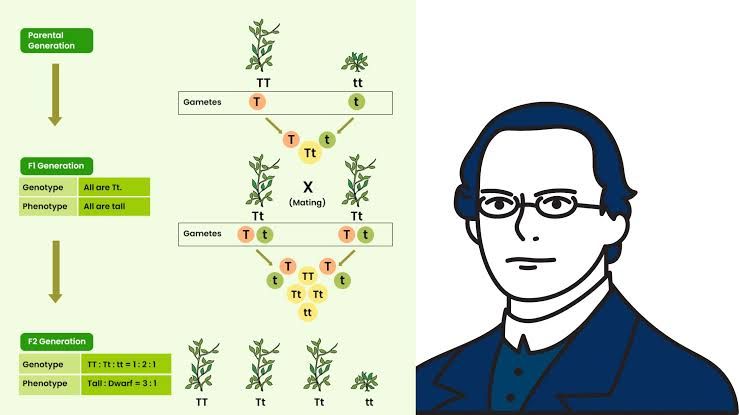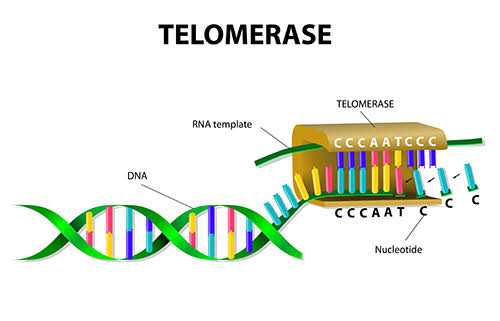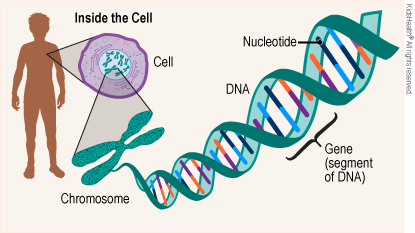
Mendelian Rules of Inheritance
Mendelian inheritance is based on the principles established by Gregor Mendel in the 19th century through his experiments with pea plants. He formulated several key concepts that describe how traits are passed from parents to offspring. The fundamental principles include:
- Law of Segregation: Each individual has two alleles for each gene, one inherited from each parent. During gamete formation, these alleles segregate so that each gamete carries only one allele for each gene.
- Law of Independent Assortment: Genes for different traits assort independently of one another in the formation of gametes, provided the genes are located on different chromosomes or far apart on the same chromosome.
- Dominance: Some alleles are dominant and can mask the expression of recessive alleles when both are present in an individual.
Patterns of Trait Inheritance
1. Autosomal Dominant and Recessive
(a) Autosomal Dominant
In autosomal dominant inheritance, a single copy of a dominant allele is sufficient to express the trait. This means that if an individual has at least one dominant allele (AA or Aa), they will exhibit the trait.
- Examples: Huntington’s disease and Marfan syndrome.
- Inheritance Pattern: Affected individuals have a 50% chance of passing the trait to their offspring.
(b) Autosomal Recessive
In autosomal recessive inheritance, two copies of a recessive allele (aa) are required for the trait to be expressed. Individuals with one dominant allele (Aa) do not show symptoms but can pass on the recessive allele.
- Examples: Cystic fibrosis and sickle cell anemia.
- Inheritance Pattern: If both parents are carriers (Aa), there is a 25% chance their child will be affected (aa).
2. Sex-Linked Dominant and Recessive
(a) Sex-Linked Dominant
Traits linked to genes located on the X chromosome can be dominant. Males (XY) have only one X chromosome, while females (XX) have two.
- Examples: Rett syndrome and some forms of hypophosphatemic rickets.
- Inheritance Pattern: An affected father will pass the trait to all daughters but none of his sons; an affected mother has a 50% chance of passing it to both sons and daughters.
(b) Sex-Linked Recessive
Recessive traits linked to genes on the X chromosome require two copies in females but only one in males.
- Examples: Hemophilia and color blindness.
- Inheritance Pattern: Affected males cannot pass it to their sons but can pass it to all daughters, who become carriers; carrier females have a 50% chance of having affected sons.
3. Codominance and Incomplete Dominance
(a) Codominance
In codominance, both alleles in a heterozygote are fully expressed, resulting in offspring with a phenotype that is neither dominant nor recessive.
- Example: ABO blood group system where IA and IB alleles produce type AB blood.
(b) Incomplete Dominance
In incomplete dominance, neither allele is completely dominant over the other, leading to a blended phenotype in heterozygotes.
- Example: Flower color in snapdragons where red (RR) crossed with white (WW) produces pink (RW).
4. X-Inactivation
X-inactivation is a process occurring in female mammals where one of the two X chromosomes is randomly inactivated during early embryonic development. This ensures dosage compensation between males (who have one X chromosome) and females (who have two).
- The inactive X chromosome condenses into a structure known as Barr body.
- This process leads to mosaicism for traits linked to genes on the X chromosome; some cells express genes from one X while others express from the other.
The understanding of these patterns provides insight into genetic disorders’ inheritance mechanisms and helps predict potential outcomes in offspring based on parental genotypes.







